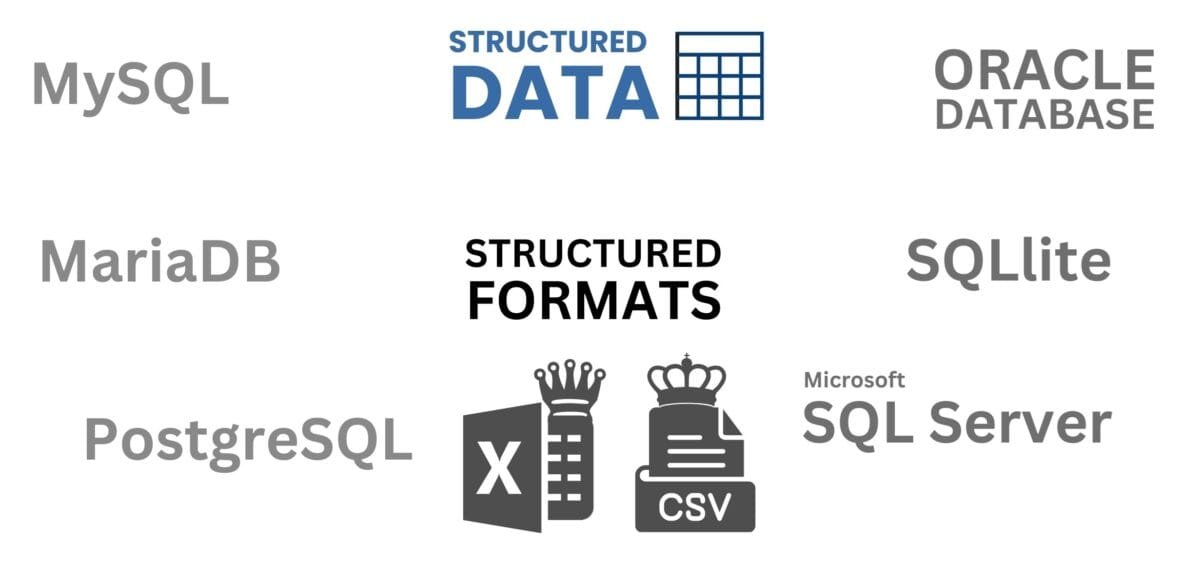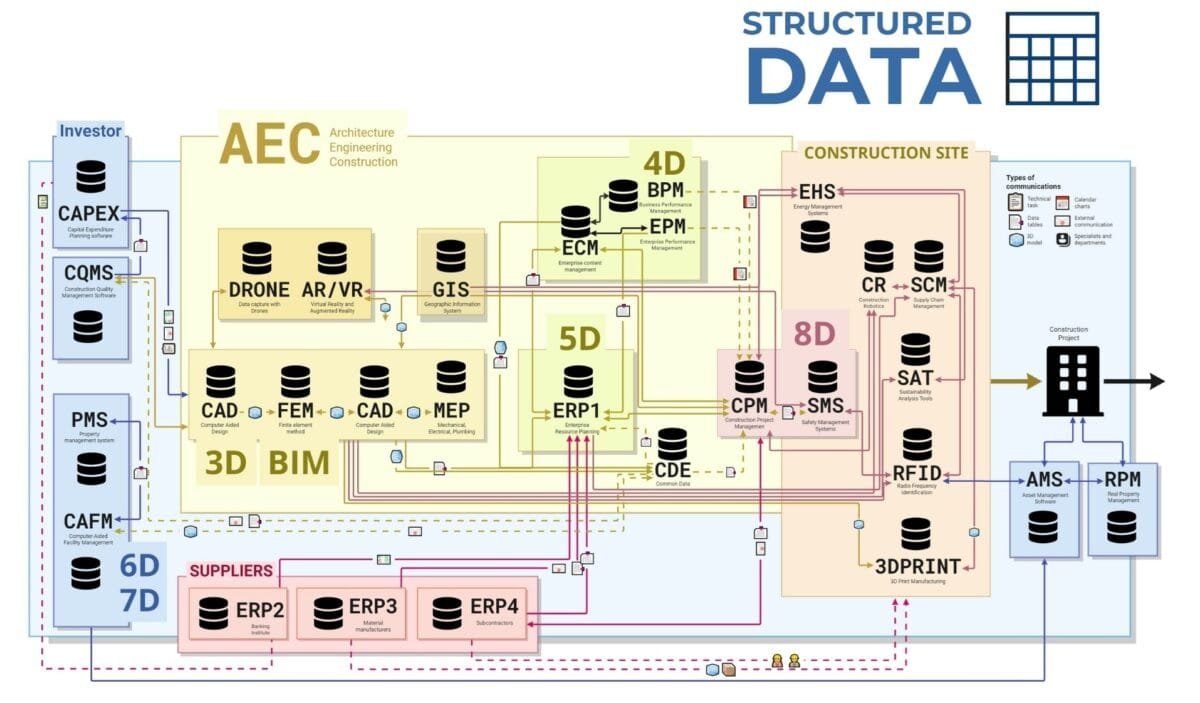Some of the most common examples of structured data used in various fields to process and analyse information are the XLSX and CSV file formats. These formats provide a clear organisation of data in spreadsheets where information is divided into rows and columns, making it easier to read, edit and analyse using spreadsheet software.
- The XLSX format, widely used at various organisational levels in construction industry, encapsulates tabular data in compressed XML files in a ZIP archive (XML+ZIP=XLSX).
- The CSV (comma-separated values) format offers simplicity and versatility for storing and exchanging data between relational databases, exchanging data within applications, and performing bulk updates.
Using commas or semicolons as delimiters, CSV provides universal compatibility with different operating systems, differentiating itself from the more platform-specific XLSX format by providing flexible processing and data transfer capabilities

Structured data are key data formats in popular and widely used software and systems
Platform independence makes the CSV format the most popular tool for working with data in heterogeneous IT environments and systems.
In the construction industry, data management systems including ERP, CAD (BIM), CAFM, CPM, SCM and others perform critical functions, and the structured data often stored in the databases of these systems form the basis for the clear organisation and effective management of almost all aspects of the company's information flows.

Almost every system or application used in the construction business has a database behind it
Most modern databases and applications work in one way or another with popular traditional relational databases in which data is organized into well-defined tables, rows, and columns.

















